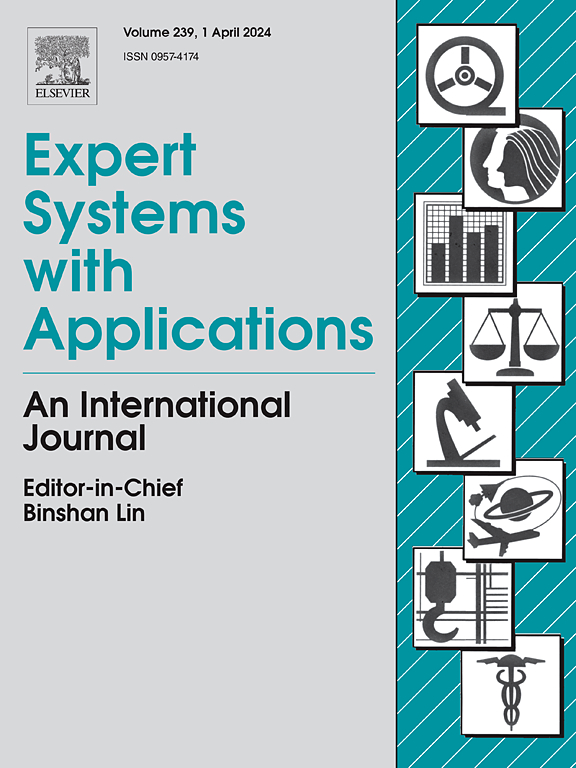EGNL-FAT:一种带频率感知变压器的边缘引导非局部网络烟雾分割方法
IF 7.5
1区 计算机科学
Q1 COMPUTER SCIENCE, ARTIFICIAL INTELLIGENCE
引用次数: 0
摘要
由于烟雾具有非刚性结构、半透明和模式可变等特点,因此与其他物体相比,烟雾语义分割面临着巨大的挑战。因此,我们设计了一种带有频率感知变压器(EGNL-FAT)的边缘引导非局部网络,用于现实场景中的烟雾分割。与传统的烟雾分割方法不同,本文首先考虑了cnn和变压器由于接收域的不同而具有不同的特征提取能力。通过构建非局部网络,增强了模型建立远程依赖关系的能力。其次,利用边缘信息缓解分割过程中类内不一致和类间相似造成的干扰;为了解决真实场景数据集的稀缺性,我们引入了森林场景烟雾分割(Forest-Scene Smoke Segmentation, FSS)数据集,该数据集包含多种烟雾类型和复杂背景。我们还提出了一种结合快速傅里叶变换(FFT)和频域解耦的频率感知变压器,以降低计算复杂度。提出了一种跨域融合模块(CDFM),利用加权融合和坐标注意(CA)对不同来源的信息进行协同学习。此外,我们开发了一个边缘特征提取模块(EFEM),该模块使用浅结构在全分辨率下有效地提取详细的边缘信息。最后,提出了一种多方向交叉注意(Multi-Directional Cross Attention, MDCA)机制来计算边缘和解码器特征映射之间的相似度,指导精确分割。实验结果表明,EGNL-FAT在FSS和smok5k上分别达到59.66% (FS01)和64.68% (FS02)和79.04% (miou)。在保持良好的模型复杂度和处理效率的同时,该模型表现出了优异的性能。我们的代码和数据集可以在:https://github.com/yitccc/smoke-segmentation/tree/master上公开获取。本文章由计算机程序翻译,如有差异,请以英文原文为准。
EGNL-FAT: An Edge-Guided Non-Local network with Frequency-Aware transformer for smoke segmentation
Smoke semantic segmentation presents enormous challenges compared to other objects due to the special characteristics of smoke, such as its non-rigid structure, translucency, and variable modes. Therefore, we design an Edge-Guided Non-Local Network with Frequency-Aware Transformer (EGNL-FAT) for smoke segmentation in real-world scenarios. Unlike traditional smoke segmentation methods, this paper first considers the different feature extraction capabilities of CNNs and transformers due to their varying receptive fields. By constructing a non-local network, the model’s ability to establish long-range dependencies is enhanced. Secondly, edge information is utilized to alleviate the interference caused by intraclass inconsistency and interclass similarity during segmentation. To address the scarcity of real-scene datasets, we introduce the Forest-Scene Smoke Segmentation (FSS) dataset, which contains diverse smoke types and complex backgrounds. We also propose a frequency-aware transformer combining Fast Fourier Transform (FFT) and frequency domain decoupling to reduce computational complexity. A Cross-Domain Fusion Module (CDFM) is introduced for collaborative learning of information from various sources using weighted fusion and Coordinate Attention (CA). Additionally, we develop an Edge Feature Extraction Module (EFEM) that efficiently extracts detailed edge information at full resolution using a shallow structure. Finally, a Multi-Directional Cross Attention (MDCA) mechanism is proposed to compute similarities between edge and decoder feature maps, guiding accurate segmentation. Experimental results show that EGNL-FAT achieves mean Intersection over Unions (mIoUs) of 59.66 % (FS01) and 64.68 % (FS02) on FSS, and 79.04 % on SMOKE5K. It demonstrates excellent performance while maintaining satisfactory model complexity and processing efficiency. Our code and dataset are publicly available at: https://github.com/yitccc/smoke-segmentation/tree/master.
求助全文
通过发布文献求助,成功后即可免费获取论文全文。
去求助
来源期刊

Expert Systems with Applications
工程技术-工程:电子与电气
CiteScore
13.80
自引率
10.60%
发文量
2045
审稿时长
8.7 months
期刊介绍:
Expert Systems With Applications is an international journal dedicated to the exchange of information on expert and intelligent systems used globally in industry, government, and universities. The journal emphasizes original papers covering the design, development, testing, implementation, and management of these systems, offering practical guidelines. It spans various sectors such as finance, engineering, marketing, law, project management, information management, medicine, and more. The journal also welcomes papers on multi-agent systems, knowledge management, neural networks, knowledge discovery, data mining, and other related areas, excluding applications to military/defense systems.
 求助内容:
求助内容: 应助结果提醒方式:
应助结果提醒方式:


